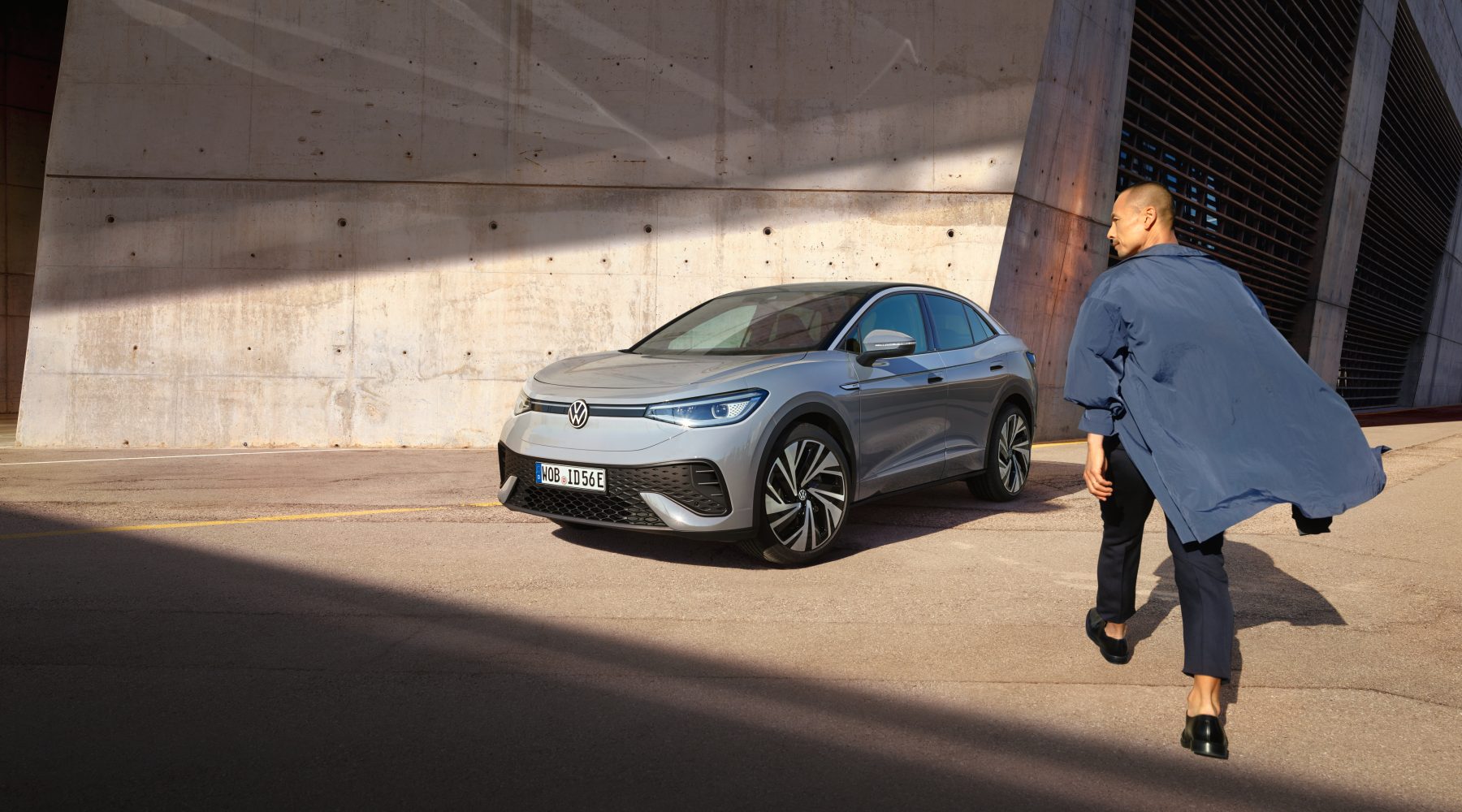Take an electric car – based on the modular electric drive matrix (MEB) – and add sportiness and elegance: and what this clever calculation results in is nothing less than another milestone of the Volkswagen brand on the path towards becoming a sustainable mobility provider.
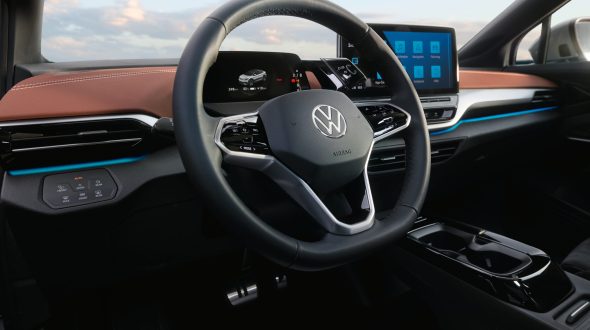
That’s because the all-electric ID.5 (power consumption in kWh/100 km: combined 16.2; CO2 emissions in g/km: 0; efficiency class: A+++) successfully combines the strengths of the SUV concept with the attractive looks of a coupé. And straight away another market segment is electrified, which is also sure to find enthusiasts among fleet customers.
Quick recheck? Correct!
With the new ID.5, Volkswagen is therefore not only extending its successful ID. family, rather also accelerating the electric offensive in all vehicle classes as part of the ACCELERATE strategy. By 2030, all-electric vehicles will account for at least 70 per cent of Volkswagen unit sales in Europe, which adds up to more than one million vehicles, while the EV percentage in North America and China should be at least 50 per cent. To achieve these goals, Volkswagen intends to introduce at least one new electric vehicle onto the market each year.
“The ID.5 epitomises the body style of the future: aerodynamic, expressive, sporty and, thanks to the MEB, short overhangs”
Jozef Kabaň
Head of Volkswagen Design
Just add: innovative driving comfort
That’s the ID.5 and its top model the ID.5 GTX (power consumption in kWh/100 km: combined 17.1; CO2 emissions in g/km: 0; efficiency class: A+++) with powerful dual motor all-wheel drive. Both versions appear to be eminently suitable for long-distance driving, on the one hand in terms of the range and on the other hand as regards the sense of space. “The ID.5 epitomises the body style of the future: aerodynamic, expressive, sporty and, thanks to the MEB, short overhangs”, explains Jozef Kabaň, who heads up Volkswagen Design. “This allows us to create a large vehicle interior despite the dynamic roof line. That was not possible before now.” In simple terms: despite the typical styling of a coupé, the ID.5 offers practically the same headroom in the passenger compartment as its model sibling, the ID.4, and thanks to the long wheelbase of 2,771 mm, even offers the type of space usually found in SUVs from higher vehicle classes. The luggage compartment offers a storage capacity of up to 549 litres.
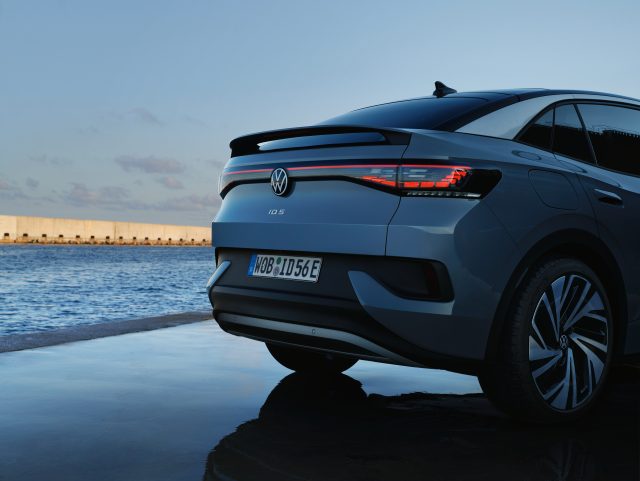
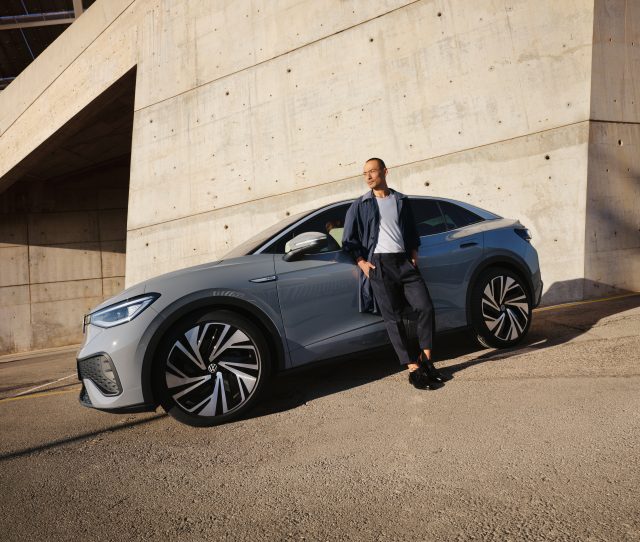
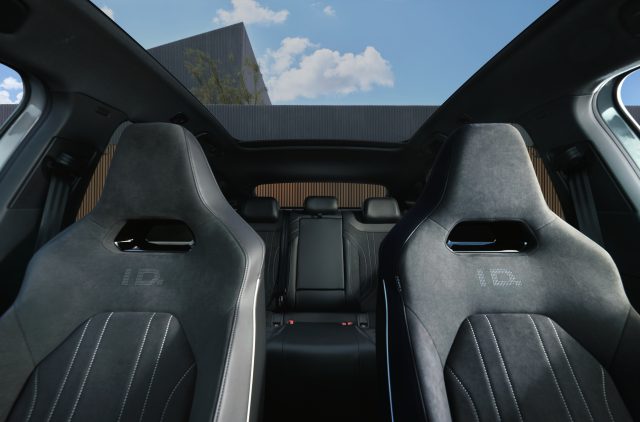
ID.5: power consumption in kWh/100 km: combined 16.2; CO2 emissions in g/km: 0; efficiency class: A+++.
Optionally available assist systems such as the “Travel Assist with swarm data” offer a relaxed and anticipatory driving experience within the limits of the system. Other systems available on request include the new Park Assist Plus with memory function, which can perform personalised parking manoeuvres, and thus, for example, take over parking operations in the garage at home (also within the limits of the system).
Incidentally, the new ID.5 and its sporty top model the ID.5 GTX will be manufactured in the Volkswagen plant in Zwickau, Germany, and will be delivered to customers with a neutral carbon balance1). Even today, virtually climate-neutral driving is possible when the two models are charged with 100 per cent green electricity. Using the standard mode 3 cable, the ID.5 can also be charged with an AC charging power of up to 11 kW. The charging output can increase to a standard 135 kW at a quick-charging station. In the ID.4 GTX, it can be up to 150 kW.2) And that has a positive effect on the long-distance suitability.
1) At Volkswagen, CO2 emissions are avoided and reduced directly wherever possible. Upstream suppliers are correspondingly obliged to avoid and reduce emissions. The same amount of CO2 emissions that cannot be avoided or reduced at Volkswagen and by corresponding obligations along the supply chain are offset by certified climate protection projects.
2) The specified maximum peak charging power can be experienced, among other things, during a charging process from 5 percent to 80 percent state of charge and approximately 23 °C ambient and battery temperature at a charging station with corresponding charging power, for example at an IONITY charging station.
The specified fuel consumption and emission data has been determined according to the measurement procedures prescribed by law. Since 1 September 2017, certain new vehicles are already being type-approved according to the Worldwide Harmonized Light Vehicles Test Procedure (WLTP), a more realistic test procedure for measuring fuel consumption and CO₂ emissions. Starting on 1 September 2018, the WLTP will gradually replace the New European Driving Cycle (NEDC). Because it involves more realistic testing conditions, the fuel consumption and CO₂ emission values calculated in accordance with the WLTP are in many cases higher than those calculated in accordance with the NEDC. As a result, there may be corresponding changes to vehicle taxation starting on 1 September 2018. Further information about the differences between WLTP and NEDC can be found at https://www.volkswagen.de/wltp. We are currently still required by law to state the NEDC figures. In the case of new vehicles, which have been type-approved according to the WLTP, the NEDC figures are derived from the WLTP data. Until it becomes compulsory, additional information about the WLTP values is provided on a voluntary basis. In cases where the NEDC figures are specified as value ranges, these do not refer to a particular individual vehicle and do not constitute part of the sales offering. They are intended solely for comparing different types of vehicles. Additional equipment and accessories (e.g. add-on parts, different tyre formats etc.) may change the relevant vehicle parameters, such as weight, rolling resistance and aerodynamics, and, in conjunction with weather and traffic conditions and individual driving style, may affect fuel consumption, electrical power consumption, CO₂ emissions and the performance figures for the vehicle. Further information on official fuel consumption figures and the official, specific CO₂ emissions of new passenger cars can be found in the “Guide on the fuel economy, CO₂ emissions and power consumption of new passenger car models”, which is available free of charge at all sales dealerships and from DAT Deutsche Automobil Treuhand GmbH, Hellmuth-Hirth-Str. 1, 73760 Ostfildern-Scharnhausen or at www.dat.de. Efficiency classes measure vehicles based on CO₂ emissions with due regard for the empty vehicle weight. Vehicles that correspond to the average are rated as D. Vehicles that exceed the current average are rated as A+++, A++, A+, A, B or C. Vehicles that are below average are described as E, F or G. The information provided here relates in each case to the EC type approval of the selected model and its standard equipment in accordance with European Directive 2007/46/EC. Optional equipment selected by you at the configuration stage can mean that your configured model corresponds to a different approved type due to the selected equipment than would otherwise be the case without the selected optional equipment. This may result in deviations in the specifications for your configured model. The specified CO₂ values are values established during type approval of the vehicle
Status: 30. November 2021
© Volkswagen AG
